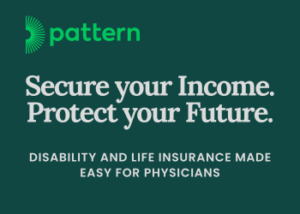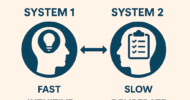It was the middle of March when I came back to my work shift. I got the news my floor would be COVID-19 floor that meant all patients coming to the ER with COVID-19 symptoms would be placed solely under my supervision.
I was all ready for it — at least I knew the challenges I was going to face.
The number of patients getting admitted to rule out COVID-19 kept on increasing. Within days my whole floor was full of just COVID patients.
I expected older patient’s as everyone was saying in the beginning that it affects the older population, but I was surprised the majority of my patients were 35 to 50-year-olds. And very few were above 70.
My first patient was a 40-year-old guy with no medical history. He was just scared with the thought of having COVID-19 and if he was going to make it or not.
I remember on the second day his condition slightly worsened, and he started crying, he couldn’t breathe because of a panic attack.
I had to sit with him and talk to him about his family to distract him like a small kid to calm him down and give him reassurance that we will fight it together.
For the next couple of days, whenever I went to check on him in the morning, I called his wife and his son from his phone with him. And that gave him the strength to fight it. He recovered completely and went home.
Another big challenge that I faced was elderly patients who lived alone. They were scared to go back home alone, and none of the family members wanted to take them back.
It was more mental stress to take care of COVID patients than physical stress. In the morning, they were doing fine, but by afternoon their oxygen level dropped, and they were intubated.
Some made it to the ICU, and some couldn’t. Families couldn’t come to see them even at their last moments. The end of the shift was full of emotions; even I couldn’t sleep properly at night thinking about patients who couldn’t make it or praying about those who were admitted.
It was one shift day on the COVID floor when I got a call from employee health informing me of my own COVID test result — it was positive.
I sat there speechless and confused, thinking what now? I got up after a few seconds, took a depth breath, and called my supervisor to tell her the news.
She asked me how I was feeling? I told her I am okay. My initial reaction was to continue business as usual — wear my N95 mask and finish my shift and to return to complete my two other shifts left until my week off.
When I sat down again, my mind was racing with thought.
My supervisor called me back, “You should go home and take off as your test is positive; you need to quarantine yourself.”
While walking home, I was thinking: thank god I was wearing my mask at all times when at work and especially during all my patient interactions. Then dread struck — my son.
He was with me a night ago. He slept in my room; I hope I didn’t pass on the infection to him. He has been staying at his dad’s place for the past 15 days since I started working with COVID patients, but he came to stay with me for a night because I hadn’t seen him for so long.
I realized I had to call my ex-husband and inform him of my results. Luckily, no one had symptoms. But I still asked his dad to make sure he is doing daily temp checks on my son.
Once in quarantine, I continued to have myalgias for another four days, along with headaches and some shortness of breath when doing minimal activity. I slept most of the time, especially in the first two days. Gradually, my immune system responded very well, and I had only a mild case of COVID infection.
My whole family is in India, and I live in the U.S. with my 9-year-old son. I didn’t inform my parents, but after three days, once I felt a little better, I called my family back home and told them that I was infected with COVID, but I was doing good, and it was just a mild infection.
We were FaceTiming so they could see how I am doing. But that didn’t help, my sister in law who answered my call first started crying. My 13-year-old niece, who was sitting next to her, ran to inform my mother who came crying and worried.
It took my couple of minutes to calm them down and make them understand I am fine. That time I realized how scared regular people are from this infection. They think no one can survive once they have an infection.
I got calls from family day and night for another two days until they made sure I was going to live.
Being a physician, I know what a mild case is, but for a layman, once you have the test positive, it means you have the infection, and it’s serious. I have seen young patients crying once I have told them that their COVID result is positive.
I quarantined myself for 14 days; my son stayed with his dad. It’s not easy to be in quarantine, but you can easily do it to save your family, friends, and your community. I was overwhelmed by texts and phone calls from my friends and relatives. I felt lucky to be surrounded by so much love. The world is still beautiful and full of beautiful people. I asked my son what did he learned from this pandemic, and his answer was, “Always wash my hands.” That just made my day. Now I am all recovered and back to taking care of my patients.
Prabhjot Manes is a family medicine physician.
Image credit: Shutterstock.com



























![Why true listening is crucial for future health care professionals [PODCAST]](https://kevinmd.com/wp-content/uploads/Design-3-190x100.jpg)
![Surviving kidney disease and reforming patient care [PODCAST]](https://kevinmd.com/wp-content/uploads/Design-2-190x100.jpg)

![Antimicrobial resistance: a public health crisis that needs your voice [PODCAST]](https://kevinmd.com/wp-content/uploads/Design-1-190x100.jpg)
